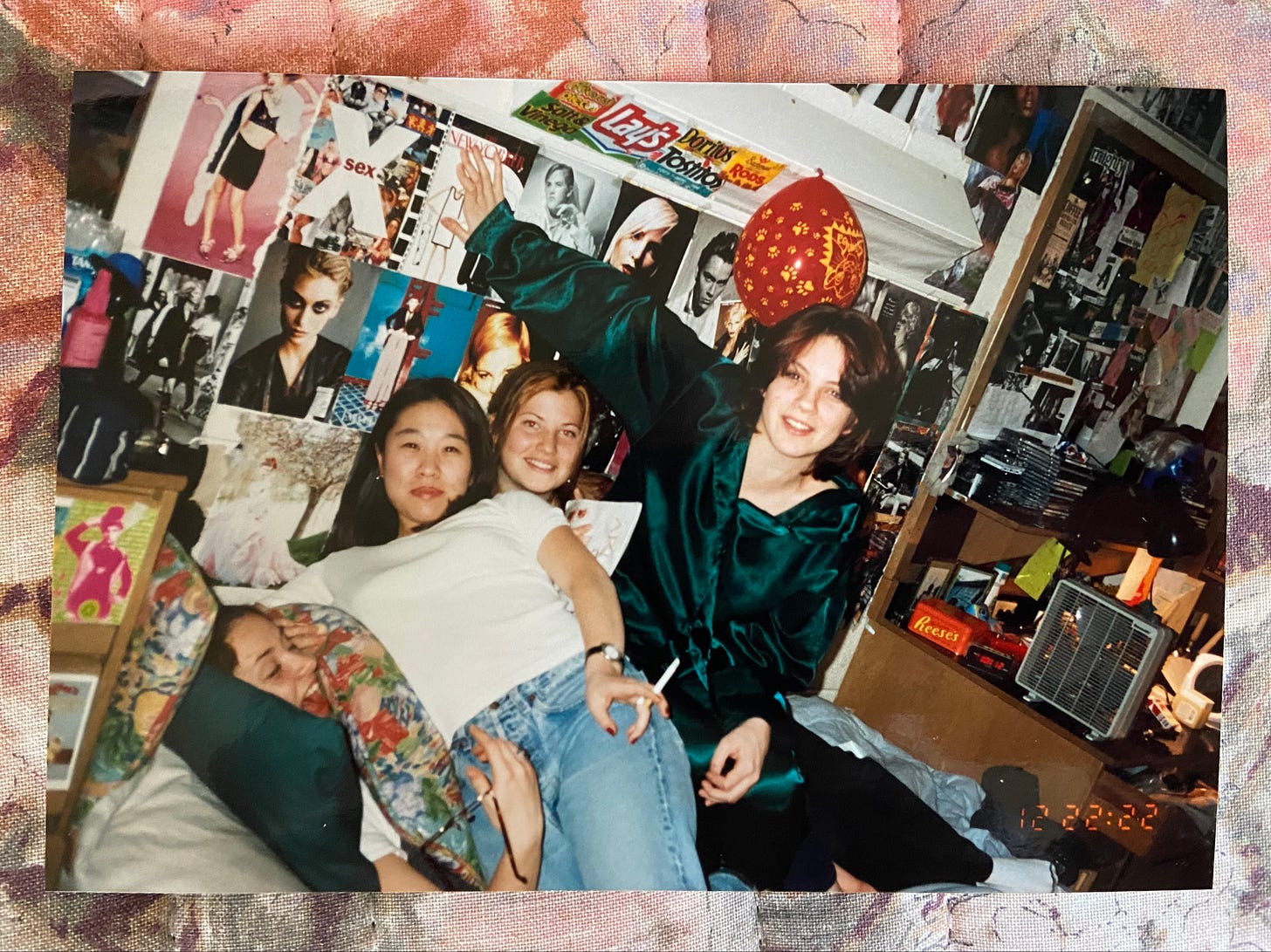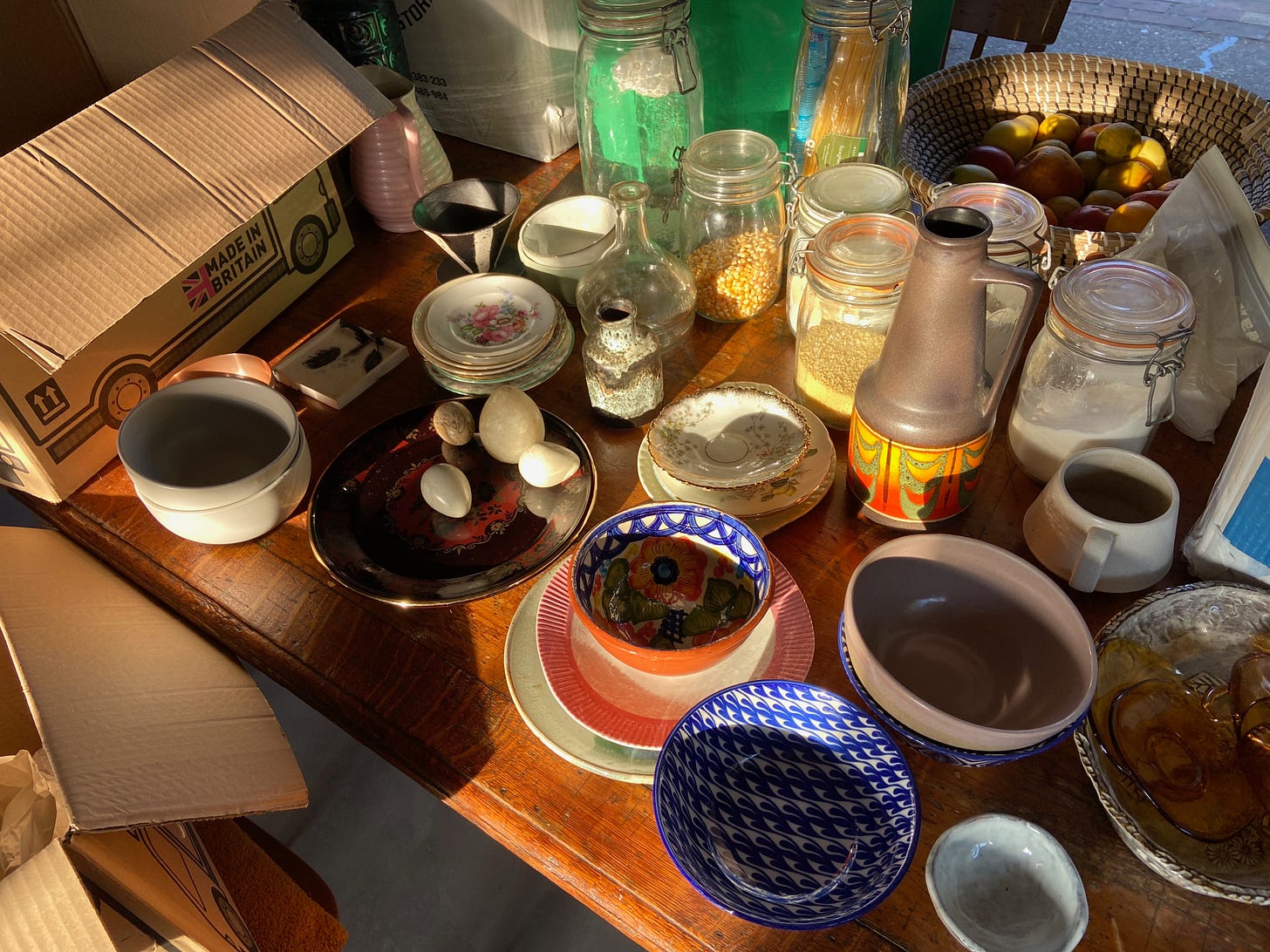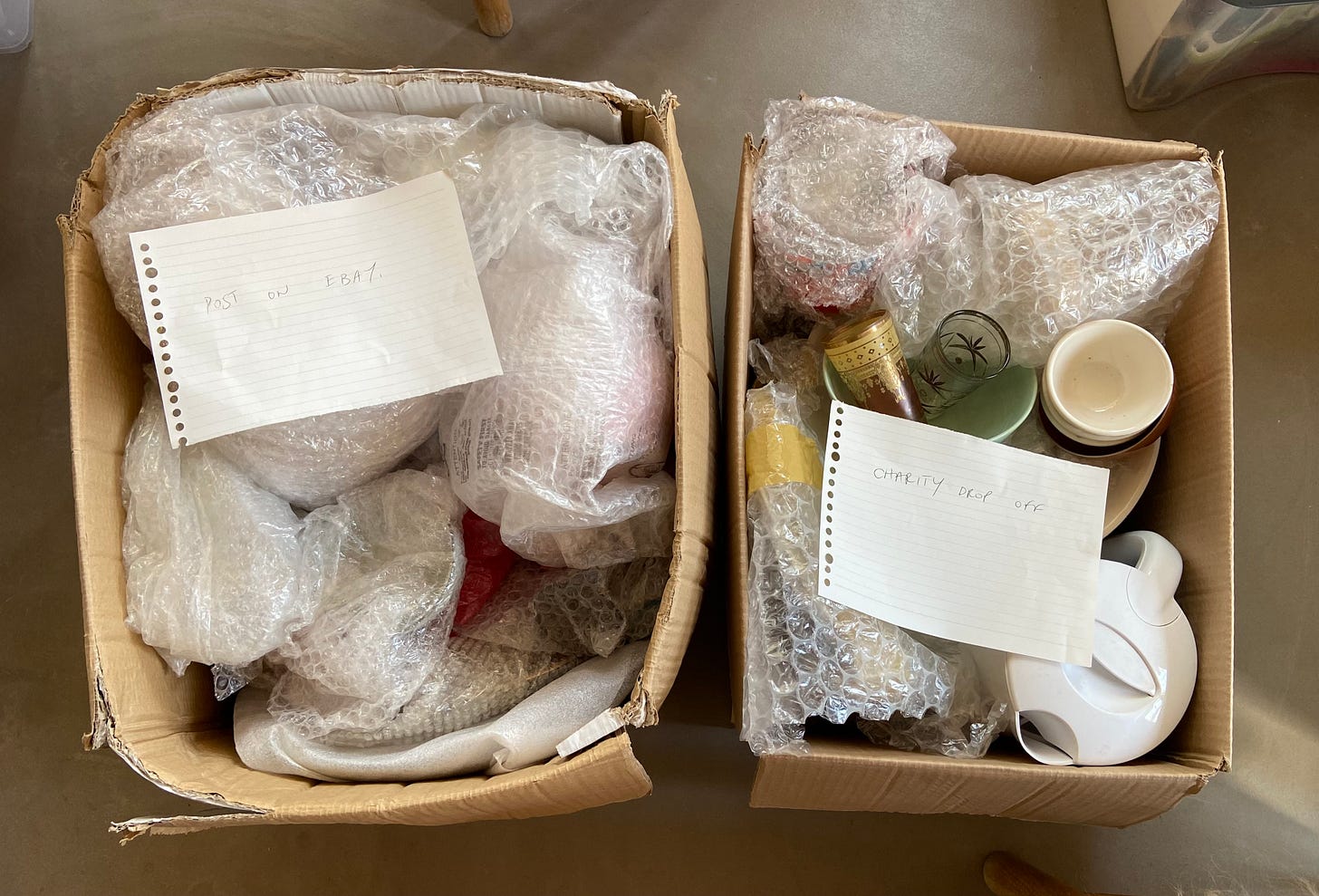When your old ways no longer work
I’ve always tended towards maximalism as long as I’ve been interested in decorating. My teenage bedrooms always had a lot going on - wall to wall magazine pages of Kate Moss and The Face covers and other nineties fashion icons; hand-painted murals; tapestries; and every other teen bedroom cliché. The first home I bought I decorated in a mix of colourful upholstery and vintage finds (although always with a clean backdrop of white painted walls) and the ever popular gallery wall of framed art.

But in recent years I’ve begun to feel burdened by all my stuff. I still like pretty things but I’ve become aware of how much time I spend arranging them, sorting them, cleaning them. As a stylist I arrange things for a living - a job designed for someone like me - and I still love it. But with our recent move and having to put most of our things in storage for a year, I realised how easy it was to live with less. I’m not talking about minimalism by any stretch of the imagination - I still like things and I will still always struggle to not buy that pretty glass, plate, chair, random thing that speaks to me from a junk shop shelf. And despite the title of this piece being tidy home, tidy mind, I’m also not saying that we should all live in spotless showrooms. Hello! I wrote a book called Life Unstyled, all about embracing imperfection.
A year ago, after attempting to get a lot of the building work done before moving into our old bungalow in Margate, we realised that was going to be impossible and so rather than continuing to rent a flat nearby, we braced ourselves to move into what was essentially a building site. Knowing that each room was going to need work and that the dearth of available and reliable builders in our area meant it would probably take time, we put most of our belongings in the loft, keeping out only the essentials. Renovating would be a whole lot easier if the house was clear of stuff.
Now, with one half of the house almost ‘done’ (quotation marks because as I’ve written in my books a home is never really done) it’s time to venture into the loft, unpack some of those boxes and see what really needs to remain.
Come with me into my loft and see what I did:
When art aligns with life
Whether by coincidence, serendipity or synchronicity - depending what you believe - as I came to the end of the first stage of loft sorting as described in the video above, I found myself finishing a book my daughter lent me, The Book of Form & Emptiness by Ruth Ozeki. One of the main characters in the book, Annabelle, has developed a hoarding problem after suffering a tragedy in her life. Another of the characters is a zen buddhist monk who has become famous for writing a book that sounds similar to Marie Kondo’s The Life Changing Magic of Tidying. Ozeki’s novel is beautifully written and wildly imaginative, about love and loss and mental illness and recovery and it examines the question of what is actually real in life?
While I wouldn’t categorise myself as being a hoarder, I know that I get too attached to things, so a lot of what Ozeki wrote resonated. Annabelle has a hard time letting go of things because of the memories they hold or their potential usefulness - she keeps broken teapots in boxes with a plan to one day glue them back together and turn them into planters. She keeps her dead husband’s shirts, saying she’s going to make them into a memory quilt. Her bathtub is filled with crafting supplies for projects she dreams of doing, but never quite gets around to.
I related to so much of this even if my bath and hallway and every surface aren’t cluttered with stuff as the character’s are in the book. My own sentimentality and plans for future creative projects often take over and I find myself with my own version of a box of broken teapots waiting to be repaired and brought back to life. I also hate waste and the idea of things being thrown out and littering the planet and I have the added excuse of always saying “maybe it will be useful for a shoot” (guess what: it’s usually not). But another character in the book, a librarian called Cory, attempts to help Annabel who is being consumed by her stuff and I think her words are worth sharing. She says this:
“In the end it’s a problem of distribution. You have too much, but others have too little. So we just have to figure out how to redistribute your things and find them homes where they’ll be loved and used. If we can liberate them, we’ll liberate you”. From The Book of Form & Emptiness by Ruth Ozeki.
Main takeaways from the video
Our belongings should bring us joy and not become a source of anguish or a burden.
Before you tackle a decluttering/sorting project, be it a garage or loft or cupboard, try to give yourself a deadline. It’s too easy to start, get overwhelmed and not finish the job if you don’t have a date to work towards. Maybe invite friends to dinner a week from when you start so you have a reason to finish the job!
Work in categories and manageable quantities. Don’t drag everything out at once. My loft is filled with boxes of clothes, books, kitchenware, camping gear, kid’s memorabilia and random homeware accessories among other things. For this first stage I chose a category - kitchen and home accessories of which I had many - and stuck with it to avoid drowning in stuff. I know this isn’t always possible if you have a build up of things that have become chaotic and disorganised, but where possible aim for bite sized chunks unless you have a finite amount of time to deal with it all.
Decide on categories and have boxes/bags ready and labelled to sort your things directly into piles. Mine were: Keep and use, keep and store, sell, giveaway to charity or friends/family, and keep as props (obviously this last one is specific to me as a stylist). Yours may be different.
Pay attention to your initial reaction after seeing an item that’s been packed away for a while. Say what you will about Marie Kondo and her theory of asking if an item sparks joy, but I do believe she’s onto something.
Wherever possible, avoid throwing things in the rubbish - there is a way to get rid of almost anything these days without it ending up in landfill. One man’s trash and all that. Many charities will collect from your home as well.
Mentioned in the video:
How I built my wall of storage.
Bar Cart Style, a book I styled and bought pretty glasses for that I still have but have never used!
Living in a building site and writing a book in it too!
Next up for me are my many boxes of books stored in the loft and hopefully not yet mildewed. As soon as the mezzanine is finished I’m making it a little reading and chill out area up there with stacks of books and low level comfy seating. Books bring me a lot of joy, but do I need to keep them all ? We will see.









thanks for recommending that book, coming from lived experience of being around hoarders I am keen to read